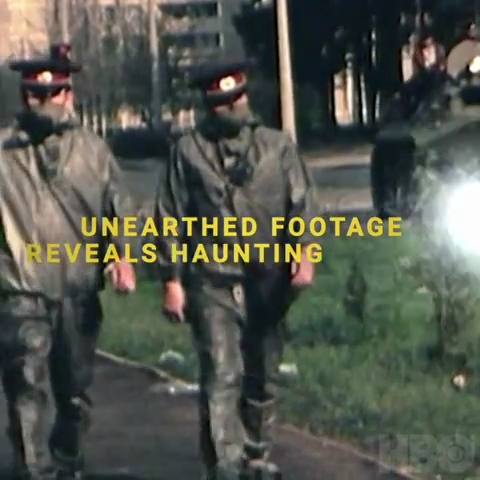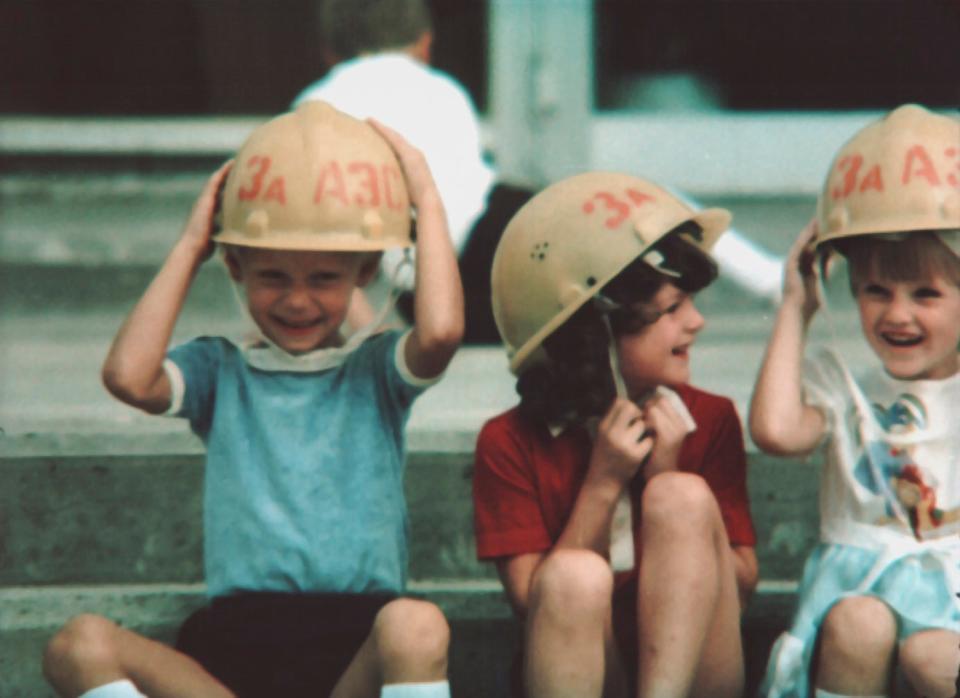From biorobots to babies: The 5 most surprising, disturbing 'Chernobyl: The Lost Tapes' takeaways
"Chernobyl: The Lost Tapes" shows the 1986 disaster at the Chernobyl nuclear power plant in a disturbing and unique way – entirely as it happened, on film.
Documentary filmmaker James Jones spent two years painstakingly hunting down footage taken during the unfolding crisis, starting five hours after the explosion on the morning of April 26 at the No. 4 reactor near Pripyat, Ukraine. Ironically, the Soviet Union regime under then-president Mikhail Gorbachev allowed the filming, while forbidding the dissemination of even basic information about the worst nuclear disaster in history from his own people and the world.
"It's so strange and counterintuitive because there's this big, desperate Chernobyl cover-up going on, and yet they film it all," says Jones. "They just assumed they would always control that material."

The most surprising revelations in "Lost Tapes" (streaming on HBO Max):
Invisible radiation was everywhere, seen in insidious white film flashes
"Lost Tapes" shows the prospering, almost utopian Soviet community around Chernobyl, with beaches, parks and the promise of safe jobs. As the authorities hid news of radiation fallout after the explosion, there are scenes of disturbingly normal life, interrupted by popping white flashes: the effects of radiation on the film.
"The weekend after the accident, you had parents pushing baby carriages in the park, a wedding, and then you gradually start to notice these white flashes on the film, which are from incredibly high radiation levels," says Jones. "Yet people are completely oblivious to the dangers."
The 'real' Lyudmila from 'Chernobyl' provides a key voice
The story of Lyudmila Ignatenko, the widow of one of the first firefighters to die in the fire, was featured in the 2019 HBO miniseries "Chernobyl," played by Jessie Buckley. She went into hiding from the media fallout that followed the Emmy-winning series, according to Jones.
But Ignatenko is one of the voices stoically leading viewers through "Lost Tapes" footage while explaining her husband Vasily's hellish ordeal of succumbing to the skin-peeling horrors of acute radiation. "Lost Tapes" shows footage of an emotional Lyudmila returning to her still-intact home. Once full of love and hope, it's permanently closed off in the radiation-filled exclusion zone.
"Lyudmila has known enough suffering for 10 lifetimes, but she is the heart of the film, really," says Jones.

'Lost Tapes' looks into the eyes of the 'biorobots'
Jones received a major breakthrough from a Kiev (now Kyiv) source who had hours of unseen footage. The found film shows the control room as operators desperately attempt to use a remote-controlled German-made robot to remove radioactive graphite from the plant's roof. When the cutting-edge machine is stopped by the radiation, the heartbreak is palpable, even behind stoic faces.
"You can see this was their last chance to not have to go up there themselves," says Jones.

The deadly task of removing the radioactive material was left to civil and military personnel known as liquidators and often referred to as "biorobots." The footage shows the hurried scenes on the roof, as workers sprint to remove the graphite one shovelful at a time, and featuresthe nervously pumped-up young men, unaware of the perils they're facing. "You see them egging each other on, saying the radiation is no big deal," says Jones.
As one survivor says of the aftermath: "No one knew they were literally going to hell."
The fate of Chernobyl babies: From expanded maternity wards to radiation-fueled birth defects
"Lost Tapes" opens with a local official proudly showing off a newly built maternity ward, the ultimate sign of a prosperous, safe future. But the optimism is destroyed by Chernobyl, notably by the birth mutations caused by radiation exposure that followed the disaster. A 1996 Nature study showed that children born in the heavily polluted areas near Chernobyl had twice the normal rate of a certain type of mutation.
Ignatenko, who hid her pregnancy to visit her ailing husband in the hospital, gave birth to a daughter, Natasha, whose name was chosen by her father before his death. He died hours after her birth.
The Chernobyl effects still linger in Ukraine
One 'Lost Tapes' clip shows Gorbachev finally visiting Chernobyl and taking heated questions from workers suffering medical symptoms. Distrust builds among Ukrainians over the government's handling of the disaster as claims of radiation sickness are called "radiophobia" by health officials. "They were gaslighting an entire nation," says Jones.
Gorbachev cited the fallout from Chernobyl as the "real cause" of the Soviet Union's collapse. Ukraine voted for independence in 1991. Jones was just finishing "Lost Tapes" in February when Russian President Vladimir Putin, once again controlling his country's media, ordered the invasion of Ukraine.
"We never thought this film would be as urgent and relevant as it is now. We're seeing the effects of Kremlin lies today," says Jones. "And hopefully seeing Ukrainian resilience against those lies."
This article originally appeared on USA TODAY: 'Chernobyl: Lost Tapes': 5 surprise takeaways from Ukrainian disaster


